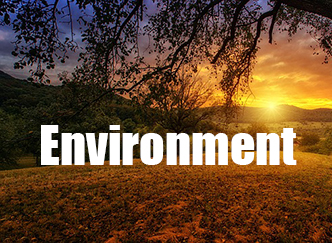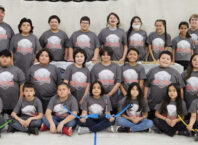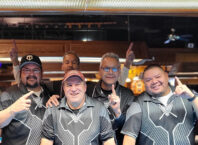by Winona LaDuke
Enbridge is seeking tens of millions of dollars in tax rebates from Minnesota counties, in a court case against some of the thirteen counties which presently have Enbridge lines. At the same time, nationally and internationally, Enbridge moves ahead with so called “green washing” and “red washing”. It may be time to quit taking candy from the corporation.
The Minnesota Supreme Court has ordered a Minnesota Tax Court to determine if thirteen northern (mostly poor) counties owe Enbridge back taxes. And it’s a lot.
Red Lake County, with 4000 people (many of them Ojibwe), faces some financial losses. According to the Star Tribune,“Enbridge is its largest taxpayer,and the county had a total levy last year of $2.6 million. County auditor Bob Schmitz says that if Enbridge prevails, the county could be on the hook to Enbridge for $3.5 million. “How do we possibly get the money to pay them back?”
“It’s scary for us,” Allen Paulson, Clearwater County’s auditor, told the Star Tribune. “If Enbridge wins its appeal, the [tab for the county] will be $7.2 million, and our levy is $6.8 million.”
Clearwater County faces the biggest hit because it’s home not only to pipelines, but an Enbridge tank farm and terminal in the town of Clearbrook.
All of this becomes pretty pertinent when we are discussing a brand new pipeline through new poor counties, whose greatest asset is their clean water. While the company is squeezing some poor counties, it continues to make hefty profits from the transport of oil through our territories; and it hopes to paint a good picture with donations to tribes and environmental causes. This is called “red washing” and “green washing”. Let me explain how this looks.
Green washing: Eco Grants from Enbridge were around $l.2 million a couple of years ago (the last update is from 2015).
We really should be taking care of the water, the pollinators, and our land. Enbridge has been trying; they’ve doled out a chunk for small wind, playgrounds, and even the Mississippi Headwaters Foundation got a grant from them to look at protecting the water.
This is a bit ironic because two of the single largest threats to the water up north are oil pipe lines and climate change; both of which are squarely in Enbridge’s plans. Enbridge is battling to not have to clean up the past mess they have made, and instead wants to abandon pipelines and make a new mess. There is, frankly, no amount of green-washing that will clean up those hydrocarbons.
Red Washing: Enbridge’s brand of red washing is to offer water bottles to White Earth’s Rice Lake village, when the power outage caused the water system to break down this past summer. After Bad River announced it was not renewing Enbridge’s easement, the corporation offered food to the Bad River tribe for their food pantry (Bad River did not take the food).
This is likely just the beginning. Powwow season is upon us and with federal budget cuts, Enbridge will likely be trying to make friends in poor communities who are facing more cut backs. Maybe someone should ask why the infrastructure in northern tribal communities is so shaky, and why it is that l3l first nations in Canada have drinking water advisories.
The problem with red washing is the huge implications as projects are forced ahead, with corporations making the appearance that they are good neighbors. Clayton Thomas Muller, a Winnipeg based Cree writer, talks about this problem, “The problem here is that we rarely talk about what those communities are giving up by providing social license to corporations to be able to state that, for example, they are sending our youth to university. Sure, corporations such as Syncrude and Petro Canada/Suncor are some of the largest employers of Indigenous peoples in the country (with Canada’s mining companies following in second place), but their ecological foot-print on our way of life is not exactly something we should be cheering about….the cumulative impacts of corporations’ ecological footprint – which includes thrusting the costs of cleaning up their mess to local communities – has a long-term, devastating effect on our collective rights and title, our lands, our waters and our health.”
And so here we are. The Enbridge Company seeks a social license to move ahead in Minnesota; but let’s look at what we have. The two largest oil spills on the Mainland were on Enbridge lines – the Kalamazoo Spill, and the Prairie River Spill. On March 3, in 1991, the Line 3 pipeline ruptured near Grand Rapids, spilling over 1.7 million gallons of oil into the Prairie River, after a delayed response by Lakehead Pipeline, Enbridge’s predecessor.
The company lost its battle for the Sandpiper fracked oil pipeline through our territory, but then moved to the Dakota Access Pipeline. After the September 4th use of dogs on our people, I called Enbridge’s Linda Coady, the Director of Sustainability, and Enbridge’s “Indian Listener”. I asked her to use Enbridge’s one third ownership of the proposed Dakota Access Pipeline (at that point in financial straits) to demilitarize the battle-field, condemn the destruction of sacred sites, and call for an environmental impact statement. That would be Minnesota Nice.
I wrote to the CEO Al Monaco, asking for Enbridge to uphold the “Aboriginal People’s Policy” which they have signed.The company did nothing, electing to let our unarmed people be injured and take bullets, tear gas and compression grenades.
To be clear, Enbridge is responsible for 28% of the tanks, rubber bullets, tear gas,and the arrests and injuries. They should have no social license here. As powwow season approaches, please do not let Enbridge underwrite our powwows.
After all, if the village of Rice Lake had no good water, shouldn’t they improve the water system for the village? Or at least,not threaten the water of the region with leaking pipelines. And, instead of making more pollution in our territory, how about they clean it up.
The company estimates over half a million structural anomalies in Line 3, or about 1 every 10 feet. Enbridge Integrity Supervisor Laura Kennett has testified, “I consider Line 3 to be in the deterioration stage … as external corrosion growth is increasing in an exponential fashion.”
One might ask Enbridge, with a 5.7 billion renewable energy portfolio, why that renewable energy is not offered to our region. Finally, Enbridge testified two years ago that it makes $550 million annually in profits from the transportation of oil across our lands. That’s after they pay all the salaries and expenses.
Enbridge is trying to pull back the tax money it paid to the good state of Minnesota, while at the same time it tries to offer candy to our tribes. We need to remember what our moms told us long ago, “that is a bad man you don’t take candy from.”
Green washing and red washing only work for a short time. That time is over.







